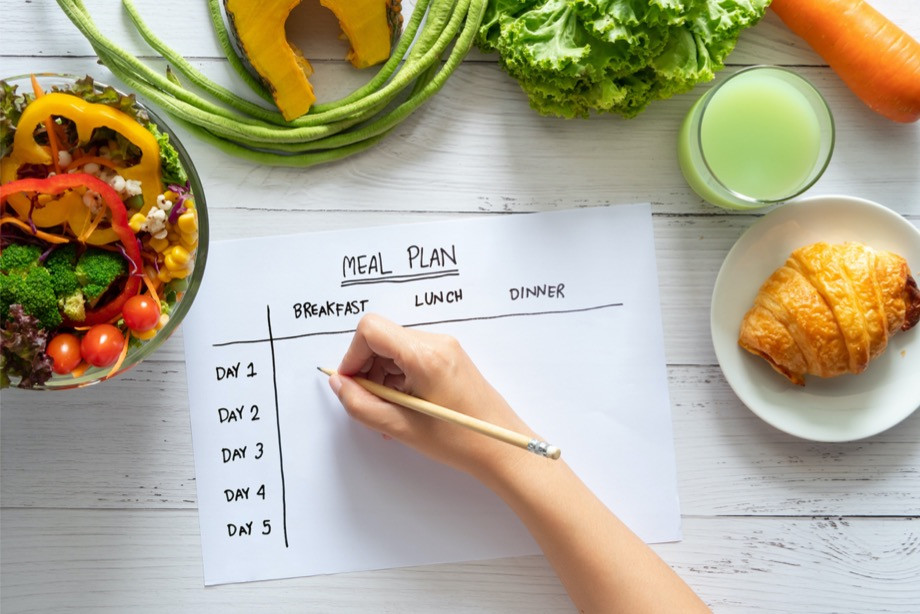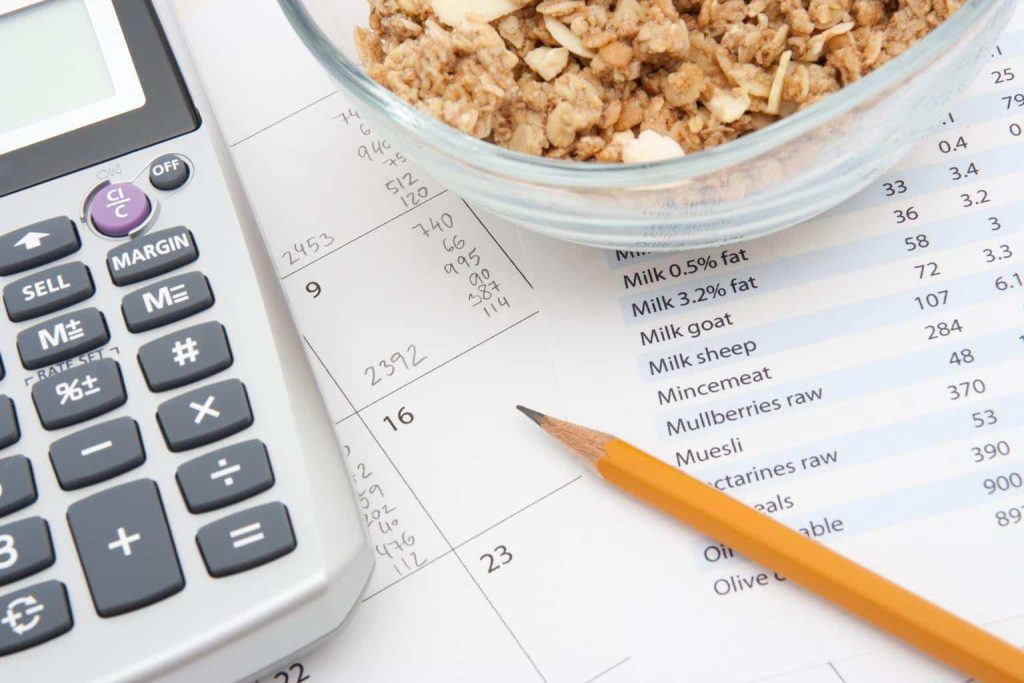Experts Introduce the First Nutrition Guidelines for People Taking Anti-Obesity Drugs
By Kayla Hui, MPH
Key Takeaways
- The first comprehensive evidence-based review on nutrition recommendations for people taking anti-obesity medications has been published. It offers guidance for calorie and nutrient intake.
- Nearly 40% of American adults are living with obesity. Some of them will need to take these new medications to achieve and maintain a weight that better supports their health.
- Not eating enough contributes to nutrient deficiencies and loss of muscle mass for people who are trying to lose weight.

Roughly 42% of all adults in the United States live with obesity.1 Eating a nutritious diet and exercising are fundamental for weight management, but some people need more help getting to and staying at a weight that supports their health.
As new anti-obesity medications enter the market, there hasn’t been much guidance about nutrition for patients who are on these drugs.
A recent research paper offers a comprehensive review of nutrition recommendations for patients on Wegovy or Zepbound, which can reduce appetite and increase satiety.2 This new guidance can help clinicians identify and manage patients who are at risk of nutritional deficiencies because of reduce food intake, the researchers wrote.
The authors of the paper acknowledged that target nutrient intakes vary from person to person, and there’s no dietary pattern that’s considered the best or most effective for weight loss.
They recommend a balance of nutrient-dense foods and beverages that provide plenty of vitamins and minerals. Additionally, they recommend choosing foods that are low in added sugars, saturated fats, and sodium.2
Here’s a general breakdown of nutrient intake guidelines for people on Wegovy or Zepbound.
Calories
Calories provide your body with the energy it needs to perform basic functions like breathing, moving, and thinking. The general energy intake during weight loss is between 1,200 and 1,500 calories per day for women and between 1,500 and 1,800 for men.3
That said, energy requirements vary depending on your age, sex, body weight, physical activity levels, and other factors.2 Your energy intake should be personalized according to your needs and goals and by a nutritionist.
You might find it useful to track calories, but Isabella Ferrari, MCN, RD, CSO, LD, senior clinical manager at Doherty Nutrition, told Verywell that calorie counting can be detrimental for some people.
“It’s super important to have a dietitian on your side when you’re trying to lose weight because we don’t want the calorie counting or calorie tracking to become an obsessive behavior where people can’t live their life without knowing how many calories they’re going to track,” said Ferrari.
EXERCISES FOR OVERWEIGHT | OBESE PEOPLE. SET NO. 1: GENERAL EXERCISES TO STRENGTHEN MUSCLES AND IMPROVE JOINT MOBILITY
Protein
People living with obesity need a protein intake of at least 60 to 75 grams per day, and up to 1.5 grams per kilogram of body weight per day is recommended, especially if you’re having bariatric surgery or other weight reduction treatments.2
The recommended protein allowance for most adults with no health concerns is 0.8 grams per kilogram of body weight per day.
EXERCISES FOR OVERWEIGHT/OBESE PEOPLE. SET NO. 2: POWER EXERCISES WITH A GYMNASTIC ELASTIC BAND/TERABAND
Carbohydrates
A common weight loss misconception is that you need to cut carbohydrates to lose weight. However, research has shown that severe carb restriction does not produce long-term weight reduction and may even restrict the nutrition that you’d normally get from eating plenty of fruits, vegetables, and whole grains.2
If you’re taking newer anti-obesity medications, Almandoz recommends focusing on balanced nutrition. The recommended amount of carbohydrates for healthy adults can work for people trying to lose weight: 135 to 245 grams per day for a 1200- to 1500-calorie diet, or 170 to 290 grams per day for a 1500- to 1800-calorie diet.
For patients who are recommended or prefer a low-carbohydrate diet, Almandoz suggests making sure that you’re drinking 2 to 3 liters of fluid per day.
EXERCISES FOR OVERWEIGHT/OBESE PEOPLE. SET NO. 3: POWER EXERCISES WITH DUMBBELLS. WEIGHT IS SELECTED INDIVIDUALLY. IT IS RECOMMENDED TO START WITH 1-2 KG
Fat
Dietary fats help your body absorb fat-soluble vitamins, like vitamins A, D, E, and K. While there’s less evidence for recommended fat intake ranges, the Acceptable Macronutrient Distribution Range (AMDR) for fat for most adults is 20% to 35% of energy intake for a 1,200- to 1,500- calorie diet.
EXERCISES FOR OVERWEIGHT/OBESE PEOPLE. HYDROTHERAPY MODULE: SWIMMING AND HYDROTHERAPY, EXERCISES IN THE WATER
Fiber
Around 90% of Americans don’t get enough fiber, but this nutrient is key for preventing constipation and helping you feel fuller longer.4 The adequate intake level of fiber is 21 to 25 grams per day for women and 30 to 38 grams for men.2 To meet your fiber requirements, focus on fiber-dense foods like:
- Fruits
- Vegetables
- Whole grains
“Unfortunately, many people in the U.S. consume a lower-quality diet that is high in ultra-processed foods,” said Almandoz. “Without appropriate nutrition assessment and guidance, we run the risk that people who take these new anti-obesity medications will just eat less of a low-quality diet.”
If you don’t eat a lot of fiber, you’ll want to ramp up slowly to avoid issues like constipation.
Since you don’t want to run the risk of nutritional deficiencies and loss of muscle mass, talk with your healthcare provider and nutritionist about your diet if you’re considering anti-obesity medications.
What This Means For You
If you’re considering an anti-obesity drug, be sure to talk to your healthcare provider and a nutritionist about how to make sure you’re getting adequate nutrition while you’re taking the medications.

DEMO VERSION OF GRS WORKOUTS FOR REHABILITATION OF PATIENTS with obesity ON YOUTUBE
Our website presents sets of exercises for the rehabilitation of the patients with obesity in the following areas:
-
EXERCISES FOR OVERWEIGHT/OBESE PEOPLE. SET NO. 1: GENERAL EXERCISES TO STRENGTHEN MUSCLES AND IMPROVE JOINT MOBILITY
-
EXERCISES FOR OVERWEIGHT/OBESE PEOPLE. SET NO. 2: POWER EXERCISES WITH A GYMNASTIC ELASTIC BAND/TERABAND
-
EXERCISES FOR OVERWEIGHT/OBESE PEOPLE. SET NO. 3: POWER EXERCISES WITH DUMBBELLS. WEIGHT IS SELECTED INDIVIDUALLY. IT IS RECOMMENDED TO START WITH 1-2 KG
-
EXERCISES FOR OVERWEIGHT/OBESE PEOPLE. HYDROTHERAPY MODULE: SWIMMING AND HYDROTHERAPY, EXERCISES IN THE WATER









